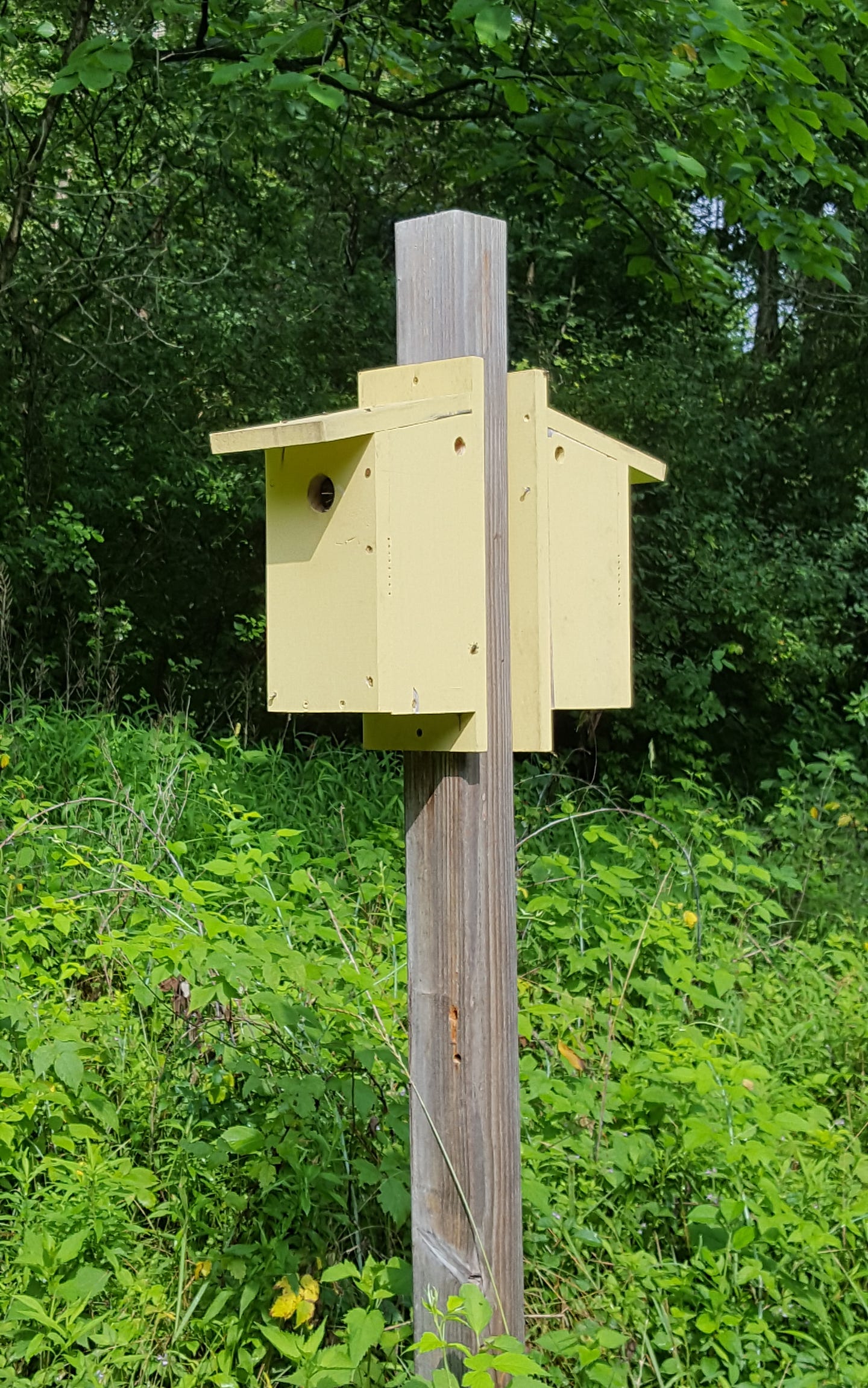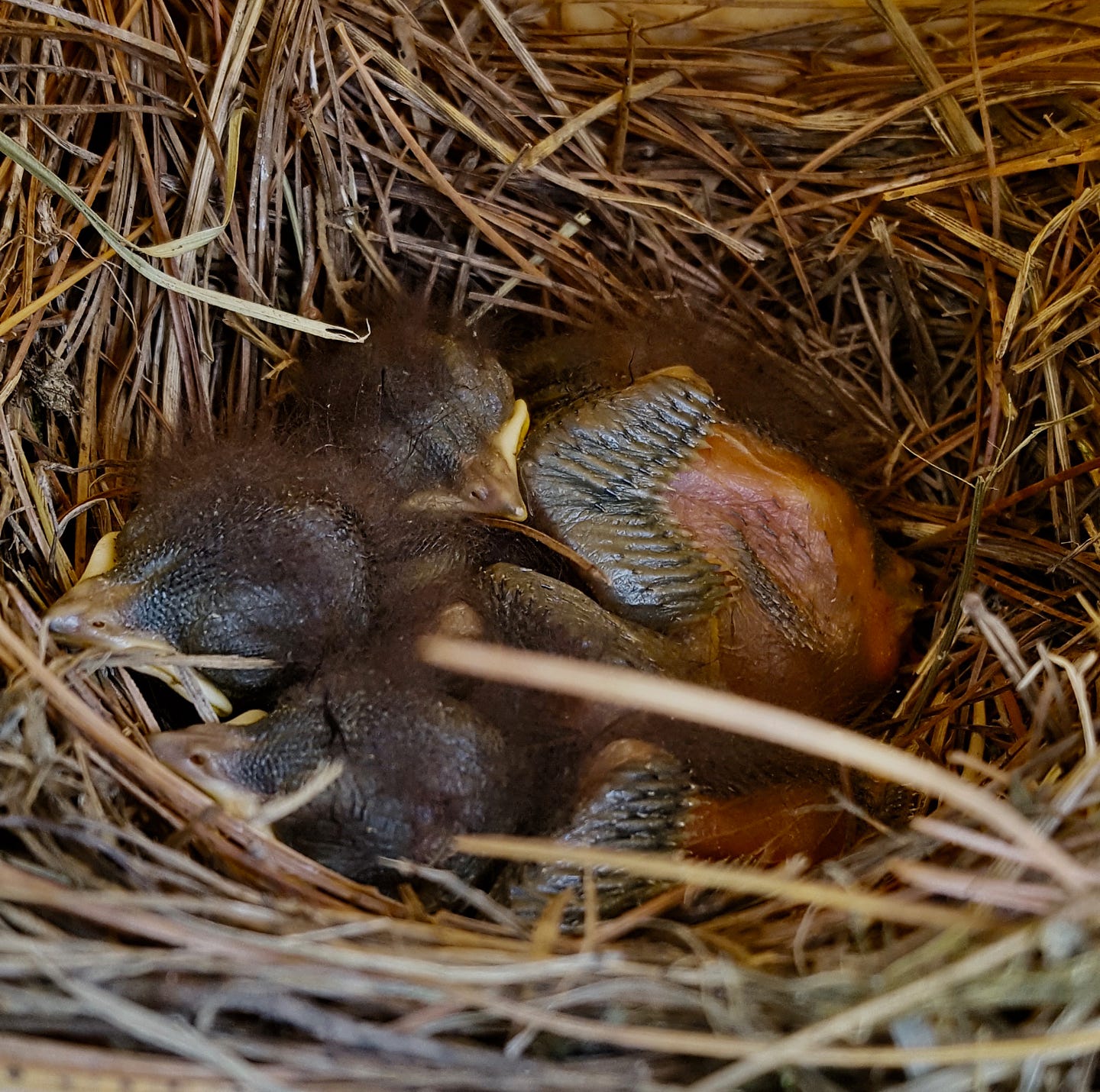When I first arrived at Shaver’s Creek in early June, I was somewhat intimidated by the prospect of interning at nature center with so much history and such a strong community of naturalists.
Thinking of ways I could contribute seemed a little daunting to me, especially because I did not have a background in wildlife or really any environmental training other than my enjoyment of being outside.
About a week into our training period, my advisor-to-be Jon Kauffman introduced us to Project NestWatch. NestWatch is a citizen science program run through The Cornell Lab of Ornithology with the purpose of gathering data on the nesting and reproductive behavior for many different kinds of birds. By monitoring nest sites and submitting observations, bird counts and nest conditions, the database is continually compiling new information on these species to increase general knowledge and improve conservation efforts.
We went on a tour of the loop that connects the nature center itself to the intern house and Lake Perez, called the Bluebird Trail. This trail gets its name from the specific sets of nestboxes known as ‘bluebird boxes’ stretched out along its pathway meant to house native, cavity-nesting songbirds such as tree swallows, house wrens and yes, you probably guessed it, eastern bluebirds. These species have been threatened since the early 1900s by habitat competition among invasive species as well the once wide-spread use of DDT and other pesticides. The nestboxes used along our Bluebird Trail have entryways and cavities specifically designed to support these native species and keep larger invasive birds from using them.

After some minor bushwhacking through the early summer growth, he showed us how to open each nestbox, look inside, examine nests and any eggs that were inside, as well as practice our bird identification and general awareness as naturalists. The mirror tool we used is basically a larger, adjustable version of the small angled mirror dentists use to examine teeth. During our outing, we found many eggs nestled in the nestboxes along the trail. Some were harder to see than others, having to readjust one’s eyes to look inside the darker cavities of the boxes against the bright summer backdrop.

I particularly remember a nest of tree swallow eggs in one of the open meadows along the trail. As we practiced approaching and examining the nest, an adult tree swallow landed in the nearby tree who was not very happy to see a crowd of interns peering into its precious home. After we each practiced our examination skills and peeked into the to see the six pale eggs, we left so the adult could go about the sacred business of parenthood. Once the observations were completed for each active nest, we returned to the center and new data was entered into our NestWatch account.

My immediate takeaway from the outing was that conservation efforts like these strike a fragile balance. The goal of aiding these birds is a noble one. Through observation we can learn more about the behavior of each species and with increased knowledge, we can more hopefully bring about more effective conservation practices. Yet peering into these nests seemed fairly invasive to me. From the bird’s viewpoint, it must be very unsettling to have giant strangers open up your house just to look in, unable to communicate that they are not trying to be a threat. We are the stewards of their survival, yet at the same time can be perceived as a danger.
In short, I was sold. The power to impact the livelihood of an entire species is a great one, one which comes with the great responsibility of respecting their space wildness but also a great sense of fulfillment. Also, having a duty that required a planned routine and a special tool to wear around my belt was a great way to feel official and important amidst my initial doubts.
I had a front row seat to nature, with the only prerequisites being my own curiosity and mindfulness. At my core I am a visual and experiential learner, so this was a uniquely exciting way to learn about native birds and their life cycle first-hand while contributing to Shaver’s Creek initiatives at the same time.
My first day out on the trail as official nestbox monitor was one of the most educational. As camp was fast-approaching, I especially appreciated the chance to get a close-up of the behavior and lifecycle of birds, our Discovery Camp’s main theme. However, it was also a reminder of the sometimes harsh realities animals face in the wild.

Many of the nests we had observed just ten days earlier were very different. Some eggs were still there, some were not. An empty house wren nest meant a successful fledge the previous week. When I returned to the Tree Swallow nest, the six eggs had been replaced by six new-born chicks. When the parents returned they were hurriedly swapping shifts to go find food in the nearby area. Watching them take feeding shifts revealed to me how their nesting mission is truly an act of teamwork. Once again, I felt both excited to be witnessing and sorry to be interrupting the parents in their important duties. Not having grown up on a farm or having any pets, this was really my first meaningful experience of new life and the awe and protectiveness that comes with it.
I also came across a nestbox that had been host to a brood of five eastern bluebird chicks. As I approached I smelled the unmistakable scent of decay. All five chicks had died about a week after hatching, likely due to some misfortune that befell the adults. I was heart-broken, and yet I was reminded that in nature, not all new life is permanent. As I look at the tallies summarizing our NestWatch data from this season as it comes to a close, about a third of all the chicks have made it out of the nest successfully.
There was another powerful lesson to be learned. We cannot control everything, especially in the natural world. Though we are rooting for these songbirds, and doing our best to give them better chances of survival, they are also part of a food chain, and a balanced ecosystem. We can try to give nature a push in the direction we want, but we cannot control fate.
Fast forward to the last days of July. I have seen the tree swallows grow up and leave their nest in Hawk’s View Meadow. Just like that scene in Good Will Hunting, I showed up one day and they weren’t there, no note or anything, gone to live their lives. I have seen nests built and also wrecked and learned the acute chattering of the house wren to let you know it’s time to leave its nest. There has almost never been the same number of total eggs among the trail nestboxes from week to week, both for better or for worse.

Later in the season (August), there was only one active nestbox left on the Bluebird Trail. Fittingly, it was a brood of Bluebirds, three chicks fresh to the world, in the same Hawk’s View Meadow nestbox that housed the unsuccessful brood of five less than a month earlier. These birds have taught me so much this summer. They have enriched my perspective as a naturalist and helped shape my awareness of how we can and do affect the environment in both positive and negative ways. By providing habitats for birds that humans have played a major role in threatening, we can try to level nature’s playing field while learning as much as we can to help improve future conditions.
I would encourage any and all who read this to explore your yard and surrounding areas. Is there the possibility of adding a nestbox for bluebirds or other native species who need our help? For more information on Bluebird conservation efforts and plans for your very own nestbox, please visit NABSand learn more about Nestboxes. You can also check out Project NestWatch and other Citizen Science programs at http://nestwatch.org/.

